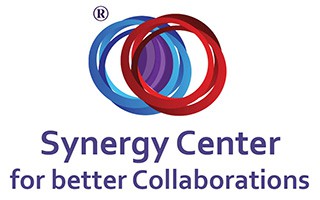Diversity is a precondition for synergy – not agreement and interpersonal chemistry. In other words, with mutual tolerance, understanding and respect, it’s possible to improve interactions and create synergy without necessarily agreeing and having chemistry.
Even if the reality is disagreements and conflicts between your culture and another, you can create together your own reality – a “bubble” or a microcosm of the reality within which you can coexist with your culturally different colleague, organization or neighbor. And that can be a great step toward increasing familiarization between conflicting and disagreeing cultures.
But how do you start a conversation about diversity in your organization?
That’s exactly what this article is all about. Read on.
How to Initiate a Discourse on Diversity
Diversity’s a dominant phenomenon in our lives. Hence, it’s of utmost importance to consider this inevitable. To initiate a conversation, start an activity. Dr. Rami Ben-Yshai, in his book, Organizational Synergy: A Practical Guide – Recalibrate Interactions to Achieve Peak Engagement, Productivity & Profit, recommends a “massage exercise”.
Afterwards, you can ask the participants of the exercise to cite examples of diversity aspects. Moreover, you can ask them questions, which relate these aspects to interactions in your organization. An important tip is to select an aspect, which raises conflicts or difficulties, and then explain deeply about how it affects interactions.
The Message Exercise
This exercise is one aspect of synergy training. It gives the participants an opportunity to experience diversity on a firsthand basis. Its chief aim is to start a discussion based on participant’s firsthand experience. It’s usually the first exercise in a workshop to arouse genuine interest, suspense and curiosity about the topic. The exercise has instructions, which you must comply with, however. Importantly, don’t let the participants know the true intentions of the exercise in the first place. Leave the exercise to suspense.
How to Conduct the Exercise
Create a circle of participants in which each faces each other’s back, so that each participant can massage the point at which the neck and shoulders meet. It’s a “pain point” because it’s usually stiff, and, when massaged, it becomes painful. Ensure there’s no conversation between the participants. Allow them to interpret the other person’s non-verbal cue. They also have a permission to massage the “pain point” of the person in front of them.
And that permission to massage must come from the person in front. Everyone has a choice to accept or reject the massage, and permission can be granted or rejected through eye contact. In other words, everyone must see eye-to-eye with two people – one in front and one behind.
In a nutshell, here’s how to conduct an “ice-breaker”:
- Ensure the participants make a circle
- Ask them to turn around to face the back of each other
- Tell them that the only person each participant can massage is the person in front of them; don’t allow them to converse, but allow them to communicate through eye contact. They can turn their heads to face the front and back.
- From this point on, allocate two minutes for the activity.
- Lastly, discuss and summarize.
As you conclude the activity, ask them why they think the activity was the first business of the workshop. You may be surprised to find useful insights about diversity. For example, the interval between pleasantness and embarrassment, comfort regarding working with whom, and whether it’s embarrassing for people of a particular gender to massage you.
In addition, some participants may refuse to participate in the exercise. This is expected, and you should allow it. Just be sure to refer to the individual’s preference during discussion, and discuss why they may have made this decision. Then, you can relate that decision to diversity and boundaries.
You can also instil comic relief in case embarrassment or tension arises. Use of laughter and jokes can overcome awkward situations, which result from the exercise. Instances of physical contacts and interactions can cause these strange moments.
Other Questions to Ask
- To what extent do you think physical contact annoyed or pleased you?
- Could you identify a situation in which the strange moment was made to be comfortable?
- What’s your boundary when it comes to physical contact?
- Do you feel uncomfortable to make physical contact with your colleagues?
- Do you feel uncomfortable to make physical contact with your senior manager or subordinate?
- Do you feel that the exercise invaded your privacy?
The answers to these questions provide you with insights about the dominance of diversity in people’s lives. The exercise is an opportunity to raise issues and aspects of diversity. The massage exercise is also a manifestation of flexible boundaries between the one massaging and the other being massaged. The creation of a new reality – even if brief – is evident during the instances of physical contact or massage.
Disclaimer: Not all cultures are receptive toward this exercise.
In Brief…
There are brief instances in which you can create a new reality together with your workmate. The massage exercise gives you an opportunity to do that without spending much resources and time. It’s also at this moment that issues of diversity arise, and the insights you gain are usually very useful.




